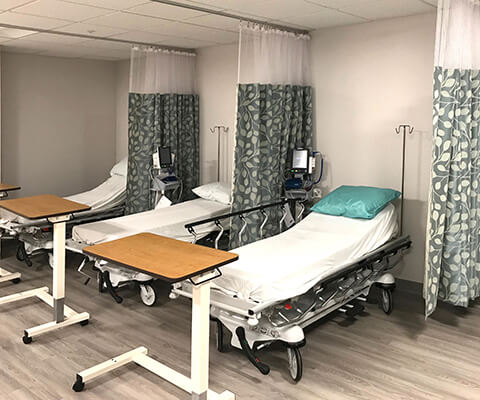When a patient’s kidneys fail he/she will often go on to require renal replacement therapy (dialysis). There are two main ways to receive dialysis: peritoneal or hemodialysis.
There are two main ways to receive dialysis: peritoneal or hemodialysis.
If peritoneal dialysis is chosen, a catheter is placed into the abdomen surgically. This soft catheter is then used for fluid exchanges which the patient performs at home. If hemodialysis is chosen access to the patients bloodstream is required, and there are three ways to accomplish this 1) a special catheter placed in the chest,
2) an arteriovenous fistula (AVF), or 3) an arteriovenous graft (AVG). An arteriovenous fistula is created when a patient’s own vein is connected to an artery in the arm and is considered the best method to receive hemodialysis.
If a patient’s veins are blocked or are very small, a prosthetic graft can be placed in the arm where it is connected to his/her artery and vein. The physicians of CVSA have been performing dialysis access surgery for decades and make every effort to adhere to a “fistulas first” policy. With this vast experience, we are able to maintain a high rate of fistula creation.



